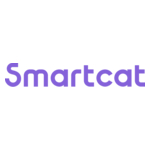BOSTON–(BUSINESS WIRE)–#CATtool–Smartcat, the Language Delivery Platform™ and founder of LocTalk™ (formerly LocFromHome™) the global localization conference, today released its first comprehensive translation industry research study on key benchmarks across the linguistic supply chain.

While the company recognizes prominent industry studies from the recent past, which clearly document major gaps and inefficiencies in the linguistic supply chain, it sought to answer the following question: what strategies could change the status quo and solve these inefficiencies for everyone, including clients, agencies, and translators alike?
“The debate over quality still lingers, as does how clients can optimize their existing budgets and localization workflows to gain efficiencies that would allow them to either increase translation volumes, translation quality or both in parallel,” said Ivan Smolnikov, Founder & CEO of Smartcat.
According to the company, until a few years ago, clients’ fears were justified at the thought of trying to collaborate directly with translators and so many left it to single suppliers and procurement; this idea of having direct access to linguists or small local agencies seemed unattainable.
Clients were stuck in inflexible contracts with one “super” agency, which led to stakeholders being unsatisfied with quality, cost and turnaround time. Now, there are solutions that enable real-time collaboration directly with translators and boutique local agencies and the results are meaningfully better.
“Part of the challenge is that currently, the industry at large remains opaque and transactional, lacking an efficient means of communication, which would bring all stakeholders in the supply chain together and support real-time collaboration. In essence, the opportunity for the industry boils down to having direct access to translators in a fully transparent way,” said Andrew Federici, VP of Marketing at Smartcat.
The company said the data for large enterprises in the study was particularly meaningful—quality, transparency, and turnaround time were all superior when the supply chain is transparent and clients have direct access to translators:
- When collaborating directly with translators, 82% said quality was either very good or excellent versus only 34% for those who didn’t collaborate directly with translators.
- When it comes to transparency, 91% rate collaborating directly with translators as very good or excellent versus only 65% for those who didn’t collaborate directly with translators.
- From a turnaround time perspective, 55% found it to be fast when collaborating directly with translators versus only 13% for those who didn’t interact directly with translators.
Smartcat also asked respondents to rate their experience with AI translation—55% say their experience has been good, very good, or excellent.
According to the company, AI translation is another key unrealized efficiency.
“Clients and their suppliers working with both AI translation, and an open and transparent supply chain that enables direct collaboration with linguists in the same workflow, have seen enormous improvements in quality, cost, and turnaround time. The savings over translating and editing content from scratch is overwhelmingly compelling,” explained Sunil Murray, VP of Revenue for Smartcat.
With 59% of translation volumes set to expand in 2023 and 41% set to double the number of languages next year according to the research, efficient systems that allow direct access to translators will be more important than ever, the company said.
To read the full report, click here.
Methodology
Smarcat fielded this primary research among a diverse cross-section of localization-related stakeholders, from loc managers and globalization leaders to functional department heads and managers alike. The survey respondents are based on 146 global companies, including renowned brands with a global cumulative footprint of well over 1,000,000 employees, operating in 80 countries, in 50+ languages and collectively spending approximately $300M on translation and localization per year. The study explores drivers, trends and tactics used by global translation teams to achieve outsized results with regard to resourcing, budgeting, timelines, and quality.
About Smartcat
Smartcat, the Language Delivery Platform™ has redefined the linguistic supply chain by combining a powerful TMS with both high-quality AI translation, and automated AI-matching linguist sourcing to make any business multilingual. With over 10,000 customers and a global marketplace of over 500,000 vetted translators and boutique agencies, Smartcat offers a unique and comprehensive enterprise-class solution that supports the localization process from end to end.
Contacts
Media
Loie Favre
l.favre@smartcat.ai




